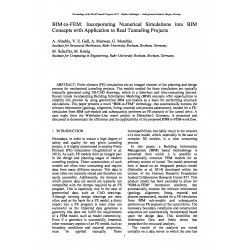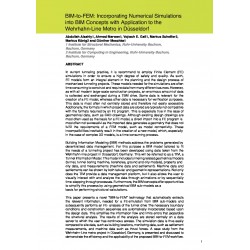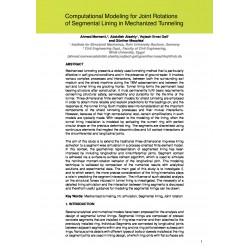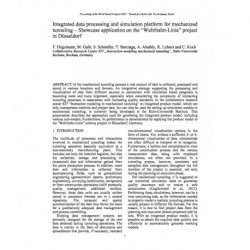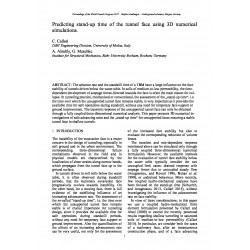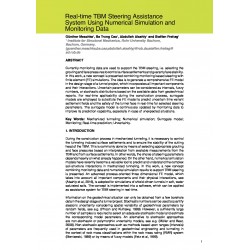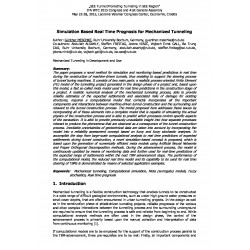No document
Search & filter
Search for a publication
Search & filter
List of products by author: A. Alsahly
-
BIM-to-FEM: Incorporating Numerical Simulations into BIM Concepts with Application to Real Tunneling Projects
Abstract: Finite element (FE) simulations are an integral element of the planning and design process for mechanized tunneling projects. The models needed for these simulations are typically manually generated using 2D-CAD drawings, which is a laborious and time-consuming process. Recent trends incorporating Building Information Modeling (BIM) concepts offer opportunities to simplify this process by using...
0,00 € -
BIM-to-FEM: Incorporating Numerical Simulations into BIM Concepts with Application to the Wehrhahn-Line Metro in...
Abstract: In current tunneling practice, it is recommend to employ Finite Element (FE) simulations in order to ensure a high degree of safety and quality. As such, FE models form an integral element in the planning and the design process of mechanized tunneling projects. These models needed for the simulations are oftentime consuming to construct and require data from many different sources. However,as...
0,00 € -
Computational Modeling for Joint Rotations of Segmental Lining in Mechanized Tunneling
Abstract: Mechanized tunneling presents a widely used tunneling method that is particularly effective in soft ground conditions and in the presence of ground water. It involves various complex processes and interactions, between both the surrounding soil medium and the shield machine during the TBM advancement and between the soil and tunnel lining via grouting mortar. Tunnel lining forms the permanent...
0,00 € -
Integrated data processing and simulation platform for mechanized tunneling – Showcase application on the...
Abstract: In the mechanized tunneling process a vast amount of data is collected, processed and stored in various locations and formats. An integrative strategy supporting the processing and visualization of data from different sources in connection with simulation based prognosis is becoming more and more important, especially when considering the complexity of interacting tunneling processes in...
0,00 € -
Predicting stand-up time of the tunnel face using 3D numerical simulations
Abstract: The advance rate and the standstill time of a TBM have a large influence on the face stability of tunnels driven below the water table. In soils of medium-to-low permeability, the timedependent development of seepage forces directed towards the face is often the main reason for collapse. In tunneling practice, mechanized or conventional, the assessment of the „stand-up time“, i.e. the time over...
0,00 € -
Real-time TBM Steering Assistance System Using Numerical Simulation and Monitoring Data
Abstract: Currently monitoring data are used to support the TBM steering, i.e. selecting the grouting and face pressures to control surface settlements and guaranty face stability. In this work, a new concept is presented combining monitoring based steering with finite element (FE) simulations. The idea is to generate a comprehensive FE model in the design stage of a tunnel project, which incorporates...
0,00 € -
Simulation Based Real Time Prognosis for Mechanized Tunneling
Abstract: The paper proposes a novel method for simulation and monitoring-based predictions in real time during the construction of machine-driven tunnels, thus enabling to support the steering process of tunnel boring machines. It consists of two main parts: a realistic process-oriented Finite Element (FE) model of the tunnelling project generated in the design phase of a project and, based upon this...
0,00 €

